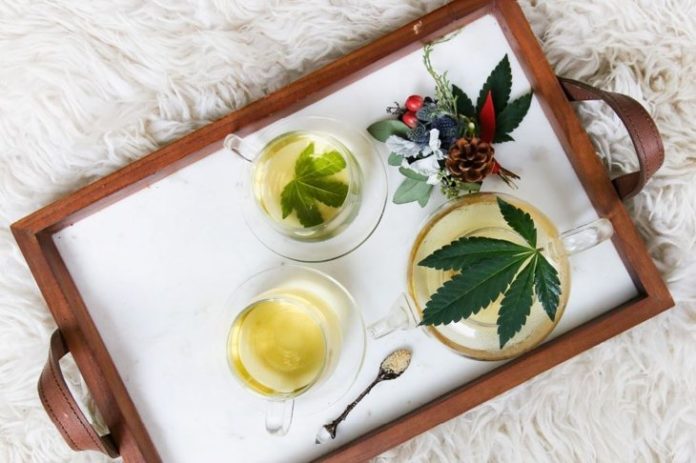
CBD is cropping up in everything from capsules and gummies to lotions and even bath bombs. With so many delivery systems on the market, it can be tough to figure out which type of CBD product might be right for your tastes and needs. Call it a “CBDilemma.”
It’s a dilemma worth solving: While CBD research is still in its infancy, studies have indicated CBD may improve symptoms of common ailments such as pain, anxiety, and insomnia. Plus, the evidence to date shows CBD is generally safe to consume, causing minimal side effects and interactions (it may interact with blood thinners and some other medications) and exhibiting no potential for addiction.
CBD, of course, is an abbreviation for cannabidiol, one of the active compounds found in both the hemp plant and its close cousin, the marijuana plant. CBD can’t get you high—and because hemp contains THC (tetrahydrocannabinol) levels lower than 0.3 percent, CBD derived from hemp has no psychoactive effects. Zero!
So here’s the lowdown on some of the most popular hemp-derived CBD product types to guide you in your search and solve your dilemma.
The fast-acting options: Oils and tinctures
In the world of hemp-derived CBD, oils and tinctures both start off as a concentrated, CBD-rich hemp extract. Hemp oils are then diluted with a carrier oil such as coconut or olive oil. Tinctures have traditionally used a mixture of water and ethanol instead.
Here’s where it gets confusing: Any CBD product that comes in a classic tincture bottle (you know the one: small and amber-colored with a dropper you use to dispense a few drops under your tongue) may be called a “tincture,” even if the contents are hemp oil instead of the traditional water/ethanol mixture. You might also see names like “CBD hemp oil” or “hemp extract” on these little bottles. Your best bet is to check the ingredients list to know what you’re getting!
Many of these products are also available in spray form so you can spritz them under your tongue or inside your cheeks. Whichever way you take them, the advantage is that if you wait about 30 seconds before swallowing, the CBD gets absorbed quickly through tiny capillaries in your mouth, so you don’t have to wait for it to make its way through your digestive tract before it hits your bloodstream—a boon if you’re seeking quick relief.
If you don’t like the earthy taste of hemp-derived CBD oils or tinctures, look for options that are flavored with natural ingredients like mint and vanilla.
The take-them-anywhere options: Softgels and capsules
Good options to tuck into your purse or backpack include capsules filled with a powdered version of hemp oil or softgels filled with the liquid version of the oil. They’re super portable, and when swallowed, there’s no taste or smell to contend with. (That’s great if you’re about to head into a close-quarters meeting with an important client or colleague!)
If you’re dealing with a chronic health condition, a daily pill is an easy way to keep the levels of CBD in your body steady. Slow and steady are the operative words here: Since the pills have to pass through your digestive tract, it can take 30 minutes or more to start feeling the effects.
The aches-and-pains-busting options: Topicals
Balms, creams, lotions, and other topical products containing hemp-derived CBD have the benefit of being applied directly to the area of your body that’s ailing you, whether you’ve got joint or muscle pain or an inflammatory skin condition. In some cases, you may feel relief of your symptoms right away; in others, it may take several hours before you notice a change—it really depends on the product and the person.
The fun and tasty options: Edibles and drinkables
In many states, edible and drinkable CBD goodies are widely available for purchase—although not in all. That’s because, despite hemp-derived CBD’s legalization by the 2018 Farm Bill, CBD hasn’t yet been approved as a food additive by the FDA.
If CBD-infused foods and beverages exist in your neck of the woods, you’ll likely find everything from chocolates and nut butters to cold-brew coffees and iced teas. These tasty offerings make taking CBD less like swallowing medicine and more like embarking on a gastronomic adventure.
If you don’t like any of these ready-made choices, you can also add a full-spectrum hemp oil product to your own drinks and recipes. (Check out our Ultimate Guide to Cooking with CBD!)
Like pills, CBD-infused foods and beverages have to wend their way through your digestive tract, making delivery slower but the effects typically longer-lasting. Keep in mind that other ingredients in these goodies can affect how much of the CBD your body absorbs. Taking CBD with high-fat foods, for example, has been shown to increase absorption of CBD.
It’ll probably take some time to determine which CBD delivery format works best for you. A good rule of thumb is to start with a small dose first to gauge the effects. Once you zero in on the right product in the right amount, your “CBDilemma” will become “CBDelight.”
To maximize your body’s absorption of orally delivered CBD, make sure you’re not hungry when you take it. Research shows people absorb more CBD—and do so more quickly—on a full stomach versus when they’ve fasted.
Rachel B. Levin is a Los Angeles-based freelance writer covering food, health, and sustainability. Follow her on Instagram: @rachelbethlevin.



